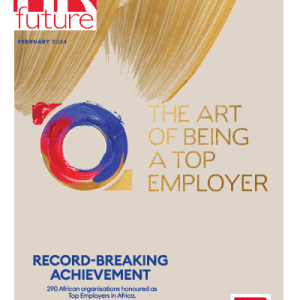Webinars are a fantastic way to learn new things, connect with industry experts, and avoid the awkwardness of small talk at a conference. But just like any social situation, there’s an etiquette handbook everyone should follow. When you maintain good webinar etiquette, you create engaging and professional presentations. Here are some tips to help you!
Webinar Etiquette: Tips for a Professional and Polite Virtual Event
- Essential Webinar Etiquette Tips for Presenters
- Prepare Thoroughly
- Start on Time
- Engage Participants
- Dress for Success
- Manage Interruptions Professionally
- Respect Question and Answer Sessions
- Conclude Gracefully
- Follow Up
- The Don’ts in Hosting Webinars
- Parting Thoughts
Essential Webinar Etiquette Tips for Presenters
Video conferencing etiquette is a guideline that governs participant behavior during virtual events. With these guidelines, you can maintain professionalism and enhance overall webinar effectiveness.
Prepare Thoroughly
Joining a webinar might seem like a casual “oh, hey, free knowledge” situation, but a little prep goes a long way.
- RSVP in Advance: This might seem obvious, but you’d be surprised. RSVPing lets the organizers know how many people to expect and ensures you get all the important details, like the link and access code.
- Calendar it Up: Treat this webinar like an important meeting. Block off the time in your calendar, set a reminder, and silence your notifications. This shows respect for the presenter and your webinar attendees.
- Do a Tech Check: Nobody enjoys the scramble of a glitching microphone or a frozen screen right before a presentation. Take a few minutes before the webinar to test your audio, video (if using), and internet connection.
Start on Time
Punctuality demonstrates respect for participants’ time. Start your webinar promptly as scheduled. Consider logging in a few minutes early to greet early attendees and address any last-minute technical difficulties.
Engage Participants
Engagement is crucial for maintaining interest throughout the online meeting. Begin by introducing yourself and sharing the webinar agenda.
Additionally, the objectives of the session and what participants can expect to learn should be clearly stated. This sets the tone for the webinar and helps manage participant expectations.
Moreover, you need to encourage interaction through polls, Q&A sessions, and interactive activities. Pose questions to the audience to stimulate discussion and gauge understanding.
Dress for Success
Let’s be real: comfort is king when you’re working from home. But while rocking your favorite pajamas might feel amazing, it doesn’t exactly scream “professionalism” if your video camera is accidentally on.
Opt for business casual attire on top, just in case. Plus, hey, you never know who you might virtually bump into – that industry leader you admire could be a fellow attendee!
Manage Interruptions Professionally
Background noise is the bane of a virtual existence. Think barking dogs, loud music from your neighbor’s apartment, or the never-ending symphony of keyboard clicks. Unless you’re actively asking a question or contributing to the discussion, keep your microphone on mute. It’s a simple act that shows respect for the presenter and ensures a smooth, noise-free experience for everyone.
Respect Question and Answer Sessions
Allocate time for dedicated Q&A sessions where participants can ask questions or seek clarification. Monitor the chat or Q&A feature throughout the webinar to address queries promptly. Encourage participants to type their questions as they arise and address as many as time allows.
Conclude Gracefully
As the webinar draws to a close, summarize key points covered during the session. Thank participants for their time and encourage further engagement, such as sharing resources or upcoming events. Provide contact information or links to some of your additional resources.
Follow Up
After the live or automated webinar, follow up with participants to reinforce key learnings and gather feedback. Send a thank-you email with a summary of the video meeting highlights, links to recorded sessions (if available), and any additional resources discussed. Invite participants to provide feedback to improve future online meetings.
The Don’ts in Hosting Webinars
Hosting a successful webinar requires more than just knowing what to do—it’s equally important to understand what not to do. Here are some key “Don’ts” in hosting video conferences:
- Don’t overwhelm participants with content. Overloading participants with information can lead to clarity and engagement. Instead, prioritize clarity and focus on delivering key takeaways that resonate with your audience.
- Don’t monopolize the conversation. As the host, it’s your responsibility to guide the webinar and facilitate discussions.
- Don’t use jargon. Instead, use straightforward language to ensure everyone can understand and follow along.
- Don’t forget to promote interaction. Interaction is key to fostering a dynamic and engaging webinar environment. Only deliver passive webinar presentations with encouraging participants.
- Don’t skip practice sessions. Rehearsing your webinar content and practicing your delivery are essential steps. Be sure to attend rehearsals or practice sessions, even if you’re familiar with the material.
- Don’t end abruptly. Allocate time for wrap-up remarks and offering contact details. Ending too soon leaves room for uncertainty and missed connections.
Parting Thoughts
Webinars are everywhere these days. From cooking demonstrations to career advice sessions, they’re a fantastic way to level up your knowledge. But with so much virtual learning floating around, it’s easy to forget that proper etiquette goes a long way in creating a positive webinar experience for everyone involved.
By following webinar etiquette, you can ensure your webinars are informative and leave a lasting positive impression on your online audience. Remember, successful webinars are a collaborative effort involving informative presenters and engaged participants.
Guest writer.









